
| Aircraft Commander | Harris Halverson |
| Co-pilot | Justin Kibbey |
| Co-pilot | Pat Didier |
| Navigator | Tim Gallagher |
| Navigator | Joe Bishop |
| Flight Engineer | Ken Heystek |
| Flight Engineer | Alan Puls (USN) |
| Flight Director | Ian Sears |
| System Engineer | Jeff Smith |
| Data Technician | Joe Bosko |
| Data Technician | Terry Lynch |
| Electronics Technician | Todd Richards |
| LPS | Rob Rogers |
| Dropsondes | Jun Zhang |
| Radar | Hua Chen |
Mission Plan :

NOAA 42RF will fly TDR/RAPX pattern into TS Ingrid. Pattern is a single figure-4, with an IP on the northeast side of storm (Fig. 1). Fly 100 nm leg lengths, but since the storm is close to the Mexican coast (Fig. 2), the outbound leg on the southwest side will have to be shortened. Conduct two radar analyses, with a combination dropsonde/AXBT drop at all turns, midpoints, and center passes. Fly at 10,000 ft.
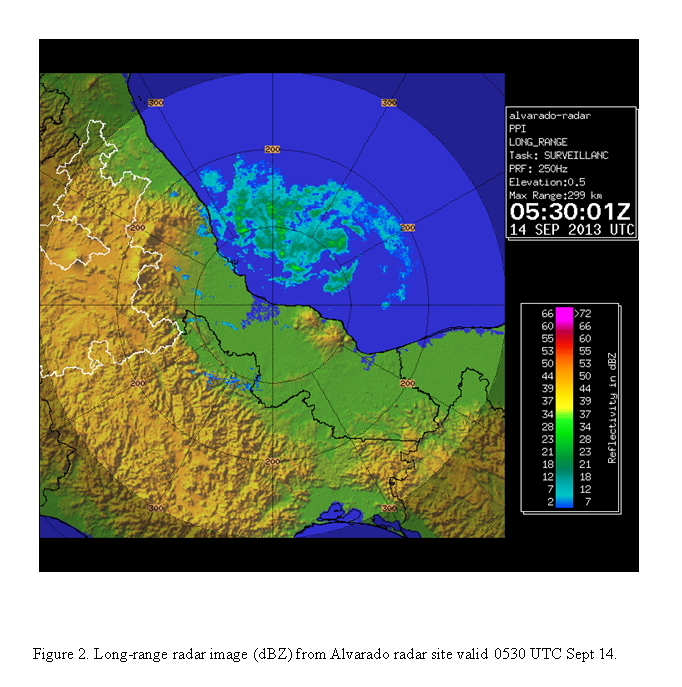
The storm was a 50-kt tropical storm experiencing moderate westerly shear and abundant low-level moisture (Fig. 3). Visible, infrared, and microwave imagery during the flight (Fig. 4) show that, despite this westerly shear, deep convection was fairly widespread, with cloud top temperatures as low as -80°C over the center and to the east of the circulation. Significant ice scattering was evident on the northeast side of the circulation center.
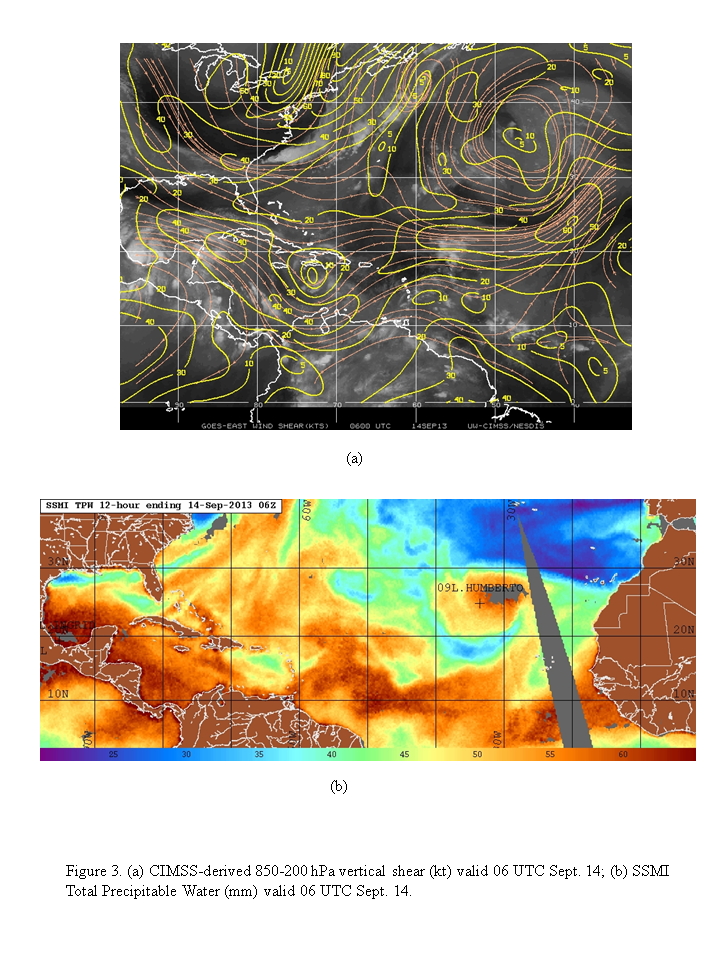
|
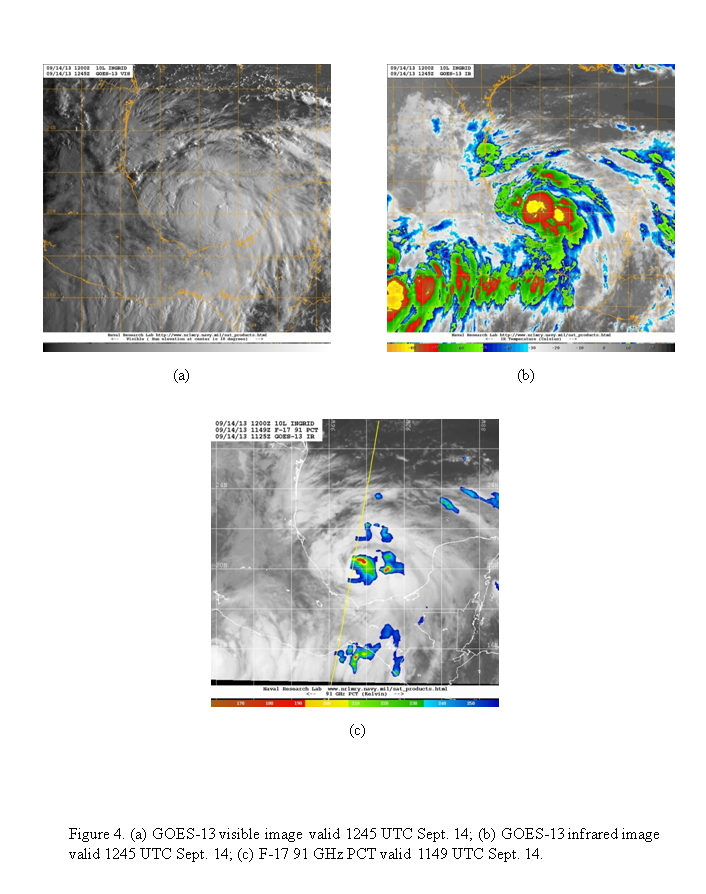
|
The P-3 will leave MacDill AFB, FL 0600 UTC and will recover at MacDill AFB, FL by 1500 UTC the same day.
Mission Summary :
| Take off | Landing
| MacDill AFB, FL | 06:11 UTC
| MacDill AFB, FL | 14:07 UTC
| | ||
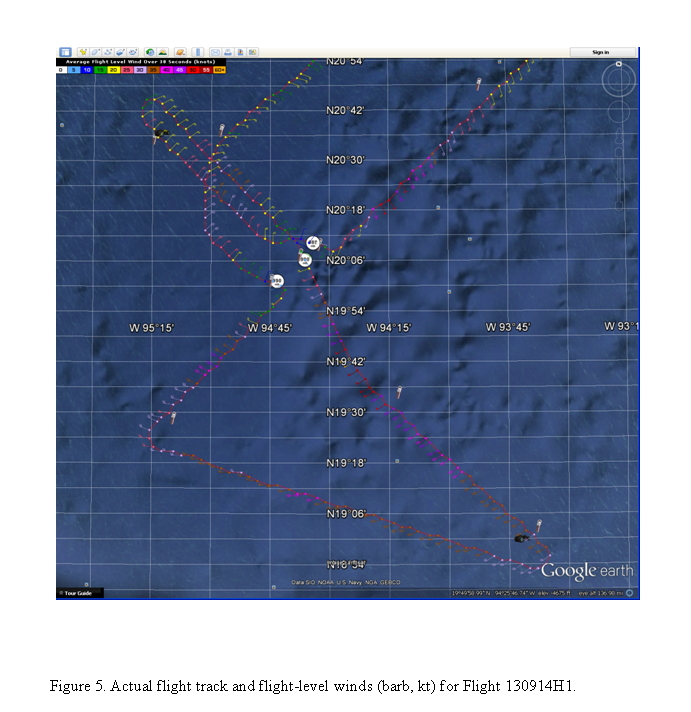
The pattern was flown generally as planned (Fig. 5). Take-off was at 0612 UTC. The storm was further east the expected, requiring a deviation to find the center. We were able to get to about 40 nm on the southwest side of the center before having to turn due to proximity to the 12 nm limit off the Mexican coast . On the second pass toward the northwest, we cut the outbound leg short at 50 nm. At that point, we turned around, did another center fix, and went outbound to the northeast for the third analysis. We dropped 11 sondes and 10 AXBT's.
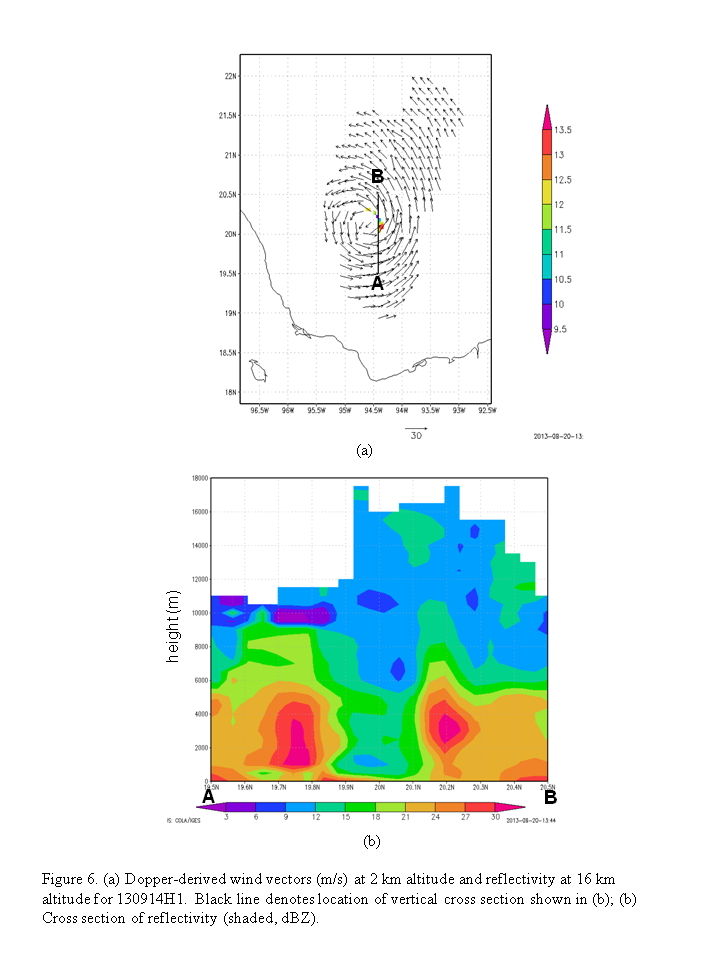
|
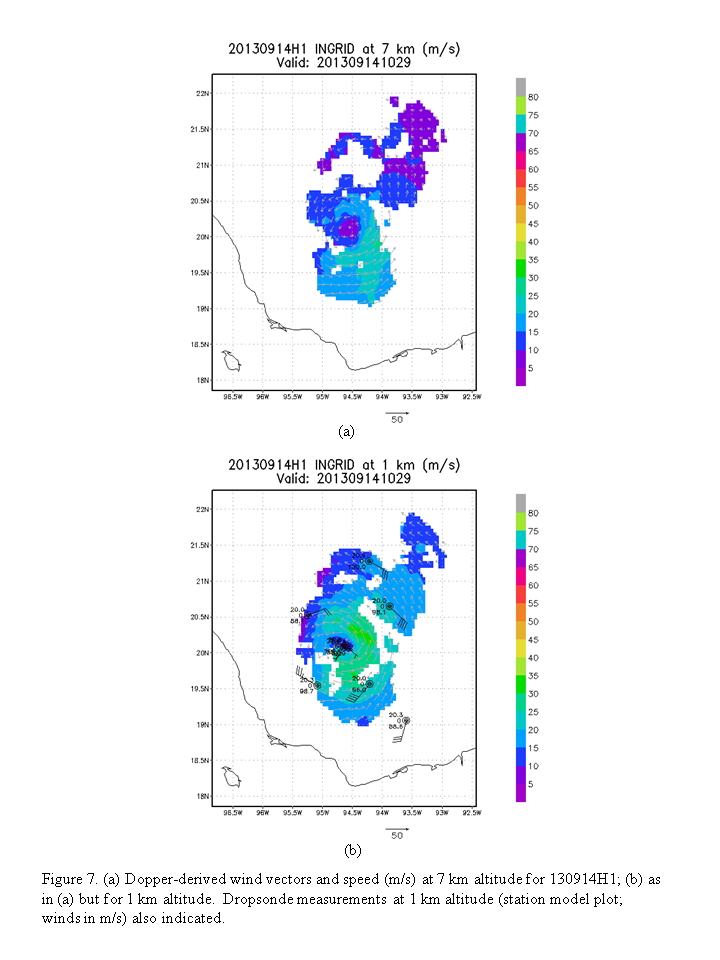
|
The storm is getting better organized. Deep convection, with echo tops approaching 18 km, are located on the northeast side near the center (Fig. 6). The wind field from the radar analysis (Fig. 7) shows peak winds in the lower troposphere also on the east and northeast sides. The location of the peak winds rotates upwind at higher altitudes, however, situated in the southeast quadrant at 7 km. The vortex appears vertically aligned between 1 and 7 km based on this analysis. The precipitation is mostly stratiform on the southwest side of the storm. MSLP measurements were between 990 and 988 hPa during the mission. Peak SFMR winds were ~60 kt, but there were no dropsondes at those locations to confirm.
The aircraft completed its mission and landed at MacDill at 1408 UTC.
Mission Evaluation:
The mission did meet its objectives. We got three radar analyses as well as paired dropsonde/AXBT's. We had to deviate because of an unexpected shift in the center, but that did not appear to cause major problems in the radar analysis. The storm appears to be intensifying, although not rapidly, even in the presence of westerly shear and proximity to land.
Problems :
There were no major problems with the mission.
Rob Rogers
Sept. 23, 2013
Mission Data :
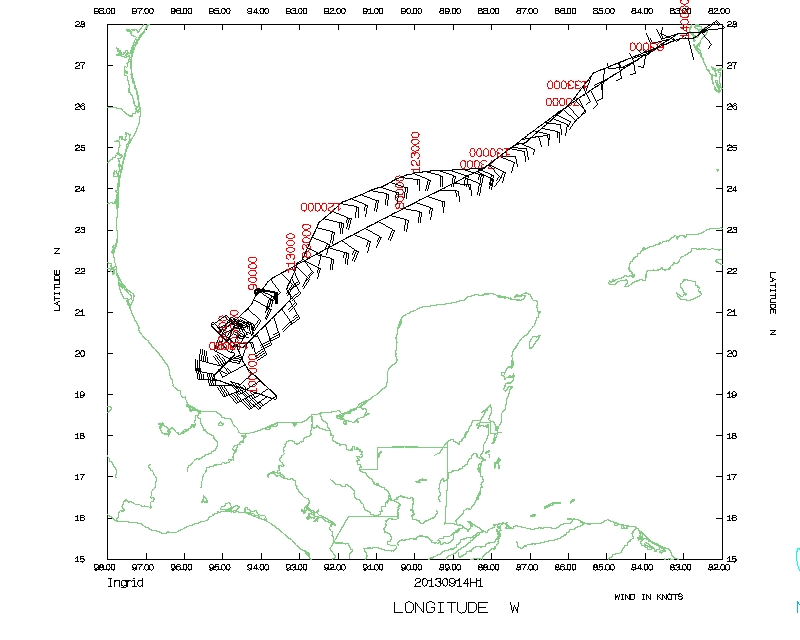 Flight track |
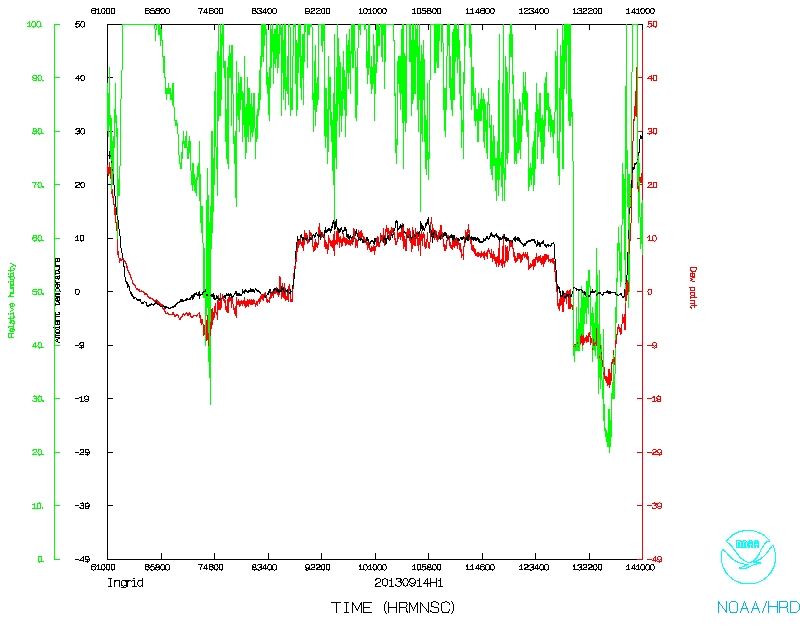 Temperature and Moisture |
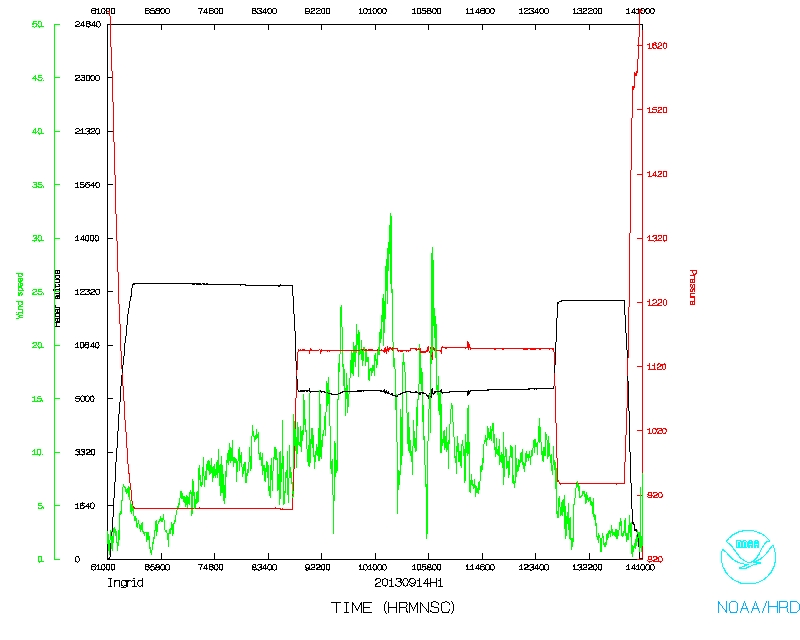 Wind and Atlitude |
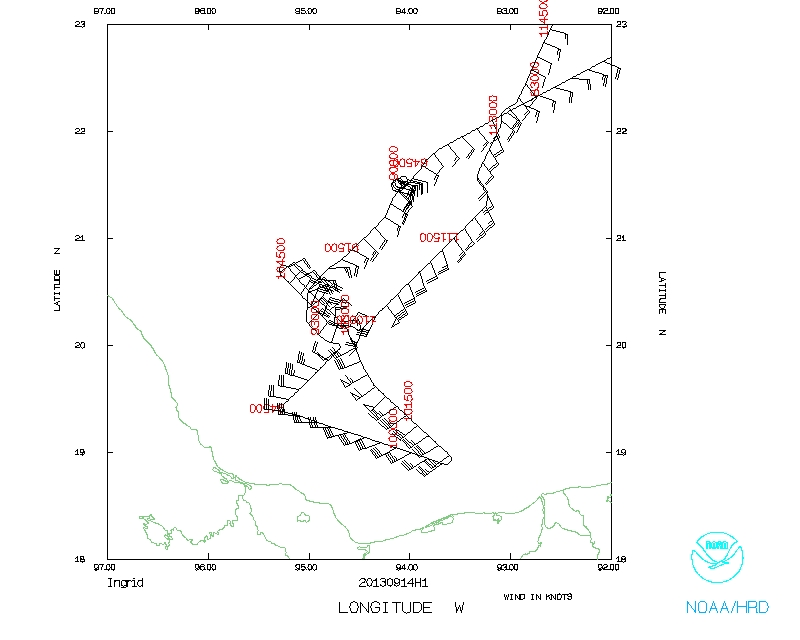 Flight track detail |